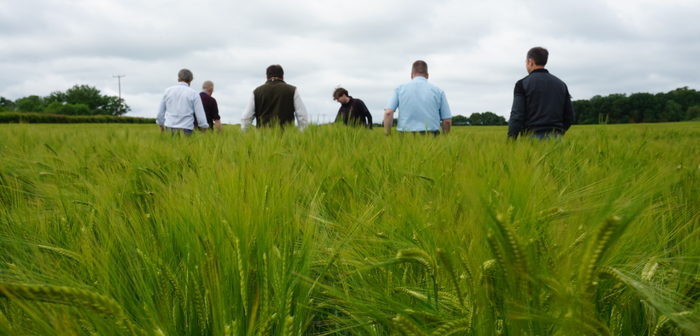By Zach Reilly, senior consultant, SAC Consulting
Grass weeds can soon become problematic under reduced tillage systems, especially where continuous cereals are grown. The Soil Regenerative Agriculture Group – five farmers working together to establish how best to support, enhance and protect their farm soils, as part of the Farming for a Better Climate project – recently visited a range of farms in Cambridgeshire and Suffolk, to find out more about how to stay on top of grass weeds in an arable rotation. Although the grass weed species vary, management principles remain constant and are discussed below.
A crucial first step to managing grass weeds is to know which weeds you are dealing with, and what their life cycle is. In reduced tillage systems in Scotland, two of the main issues can be Annual Meadow Grass and Barren Brome, but Perennial and Italian ryegrasses can also be problematic on mixed livestock farms. The methods used to control these weeds differ, due to their different growth patterns:
Annual Meadow Grass (AMG)
This grass is found across the country and is recognised by its light green, short and tufted appearance. It poses little threat to crop yields, however, it can delay ripening and interfere with harvest. AMG has a short lifecycle of only 6 weeks, because of this it is often seen at various stages of its lifecycle in spring and winter crops. Control relies on the use of pre-emergence herbicides and glyphosate to tidy stubbles in cereal crops.
Barren Brome
Often found where winter cropping dominates, barren brome usually creeps in from the hedges and margins at the sides of fields. It is easily recognisable due to its purple tinted leaves and drooping flower head. As Barren Brome does not germinate from a depth of over 10cm, ploughing has been a major part of its control to date. However, in a reduced tillage system, leaving the seeds on the surface where light aids germination can allow for the weed to be sprayed off prior to planting creating a stale seed bed.
Crop rotation
A key to managing most weed, pest or disease problems is crop rotation, however, this is particularly important when controlling grass weeds. Ensuring that the cereals which dominate crop rotations (barley, wheat, and oats) are interjected by break crops provide an opportunity to use different chemistry, but also different growth patterns so that cultural control can be used. In reduced tillage systems, potatoes are often removed from the rotation due to the level of cultivation required, so ensuring that this break crop is replaced is very important. The Soil Regenerative Agriculture group have been trying different crops for the past three years, and have had success with oilseed rape, spring beans and winter beans. Alongside break crops, sequencing of cereal crops can also aid, or hinder grass weed control. Oats and barley are more difficult than wheat to selectively terminate grass weeds, so thinking about the order these crops are grown can help. The group have found that it is very difficult to remove wheat from a crop of oats, so avoiding wheat as a prior crop to oats is prudent in reduced tillage systems.
Vary the chemistry
Using a variety of chemical controls is a key step to controlling grass weeds. The Soil Regenerative Agriculture group have found that the best control is gained using a pre-emergence herbicide, targeting grass weeds as they emerge. However, it is also important to use a variety of chemistry to select grass weeds out from a growing crop, especially for grasses which emerge in the spring or have a short life cycle. Ensuring that chemistry is varied and targeting weeds while they are small to ensure that they are susceptible are important steps, this will also help to prevent resistance building up in weed populations.
The group has also found that there is a difference in grass weed emergence between strip tillage and direct drilling. Direct drilling usually disturbs less soil which results in a reduced level of grass weed chitting, however this method of establishment relies on a well-structured soil to ensure crop success. Alternative methods of grass weed control, perhaps less suited to Scottish conditions, include delaying the sowing date to provide a stale seed bed. Although this method is possible, it relies on the early harvest and late sowing of crops which can provide challenging in the Scottish climate.




